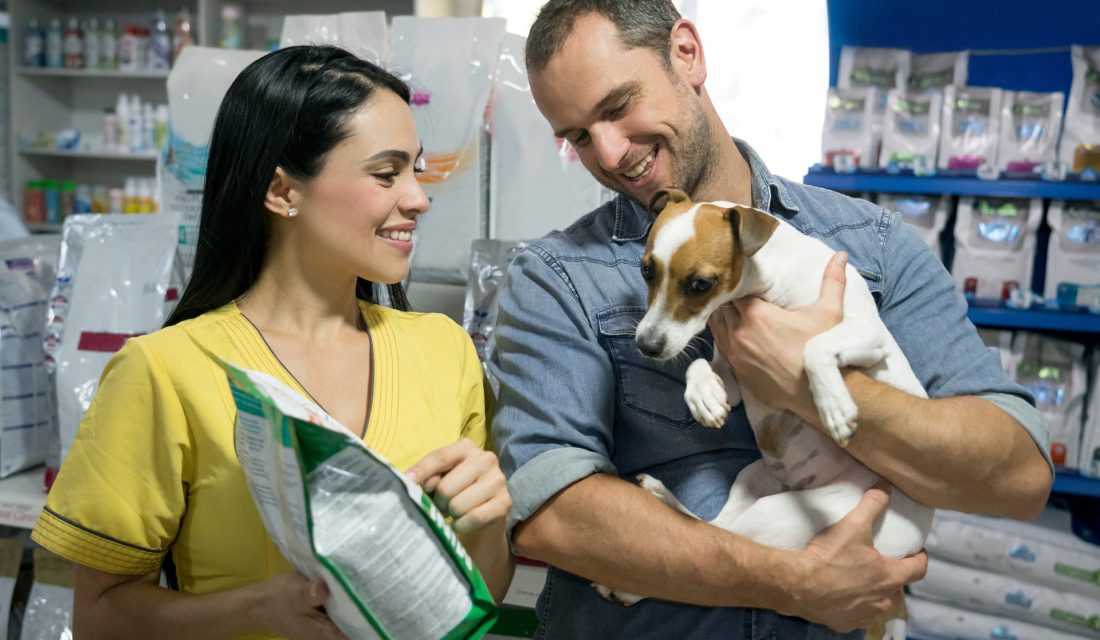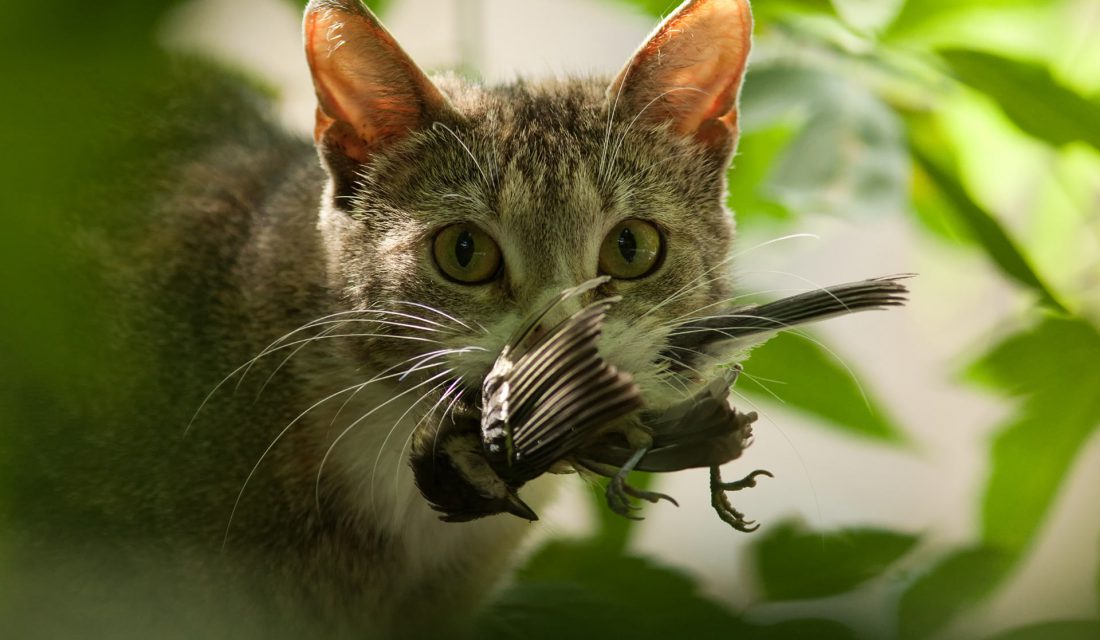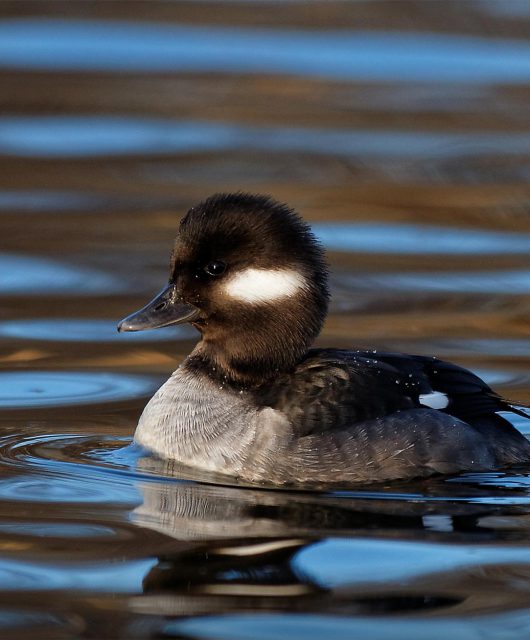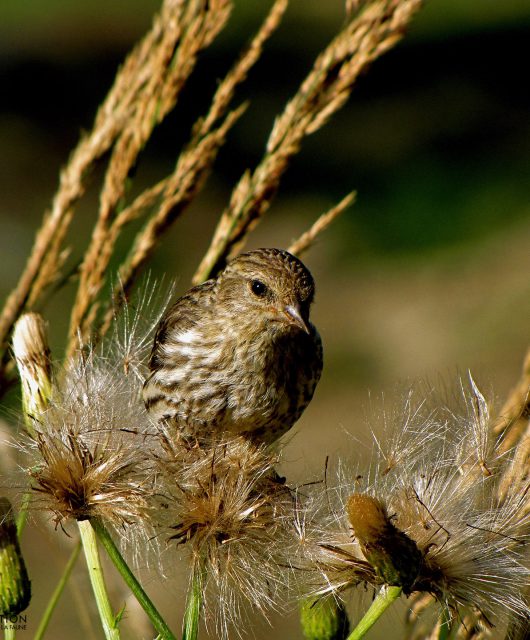How to be an eco-friendly pet owner
Here’s a dilemma for animal-lovers: are domestic pets harmful to wildlife? In 2019, the Canadian Animal Health Institute reported that Canada was home to 8.2 million pet dogs and 8.3 million pet cats. There’s no doubt dogs and cats are beloved members of many Canadian families, but our furry friends can also have consequences for the environment.
Foodie Pets

The next time you’re at the grocery store, pay attention to the packaging in the pet food aisle – how many times do you see the word “premium”? Pet owners are increasingly willing to spend money on their pets, and that includes high-end food packed full of meat. In fact, some premium pet food brands even claim to use human-grade cuts of meat.
Unfortunately, like so many industries, the meat industry can be harmful to the environment, including through fossil fuel usage and water and land consumption. Gregory Okin, a professor at UCLA, found that cats and dogs account for 25 to 30 per cent of the environmental impact of meat consumption in the United States, and are responsible for creating approximately 64 million tons of carbon dioxide each year.
This doesn’t mean you should stop feeding your dog or cat high-quality, meat-based pet food. But consider talking to your veterinarian about the best brands of pet food for a healthy, complete diet – this can help you make choices based on nutritional value rather than potential marketing tactics.
The Poop Problem

Nobody likes to see dog poop on the ground – but did you know it can harm more than the soles of our shoes? In North America alone, dogs produce millions of tons of poop each year, and it is often full of bacteria, viruses and parasites. When dog waste breaks down it can enter our water supply, polluting our waterways and potentially harming aquatic wildlife and humans. Make sure you always pick up after your pooch, and use biodegradable bags rather than plastic ones.
Cats and Birds

Cats chase more than string, mice and laser pointers. Globally, outdoor cats are responsible for the deaths of billions of birds and small mammals, and they have even contributed to the extinction of certain wildlife species on islands. In Canada, outdoor cats are estimated to kill between 100 to 350 million birds every year. Bird species in southern Canada that nest on or close to the ground are especially vulnerable.
Consider keeping your cat indoors when birds are most vulnerable – at least an hour after sunrise and an hour before sunset. You can also research and purchase certain products that may help, including a bell for your cat’s collar or the specially designed “Birdsbesafe” cat collar.
Dogs and cats are wonderful additions to the family, and owning a pet can help people develop a greater appreciation for wildlife and encourage them to spend more time outdoors. But it’s always important to consider our impact on the environment. We hope these tips help you be an eco-friendly pet owner!



7 comments
Hello
Interesting article about pets and their effects on wildlife. Regarding house cats I think the operative word is house. As you stated many millions of small animals and birds are killed every year by house cats.
Check out https://abcbirds.org/program/cats-indoors/ for more eye opening info on the damage done by free roaming house cats and a simple solution that benefits many wildlife species and house cats themselves.
J Mills
Retired Wildlife Biologist
First of all, the grocery store is not where you should be shopping for pet food. There is more waste in a visit to the veterinary clinic due to the complications of poor nutrition than in using good food to begin with. Secondly, biodegradable bags for waste do not make any difference if you are sending the package to the landfill, where there is not enough oxygen to break down the bag; paper is actually the best thing to use. Thirdly, I would have hoped for a mention of the more eco-friendly options in cat litter, like wheat grass or newspaper pellets. One recommendation I can also make is to clean your litter boxes EVERY DAY, which eliminates the need for the heavily scented litter (which is just plain bad for your cat).
First, I would say that you don’t need to keep your cats indoors as someone above has suggested. My cats have an outdoor catio but they can access through a window . They also go out on leashes, which is just as possible for cats as it is for dogs, if you start them early enough. And even if you start later, if they’re fairly easygoing, it can work .
And climate change absolutely does mean you should stop feeding your cats and dogs meat. The Orkin article that you cited says that the cats and dogs in the United States alone, if they were a country, would be the fifth largest meat-eating country in the world. At this stage in the game, we cannot afford this. If we don’t start making these choices, we are signing a death warrant for our children. Take a look at Australia if you think I’m being dramatic. Take a Look at California and British Columbia and Alberta. We need to start talking about meat, and that conversation needs to include our companion animals.
Dogs are easy to make plant-based, and there’s lots of research that indicates that when done properly, it’s perfectly healthy for them. You can get food online, but many pet stores also carry Halo and Gather plant-based food for dogs, and they have been studied and scientifically found it to be complete.
It’s harder for cats, but perfectly doable, and there is a growing body of evidence that suggests that it can be done. I have six plant-based cats, all rescues, and I know dozens and dozens of other people who also have plant-based cats. There is a vegan cat group on Facebook, and a vegan cat and dog group . Taurine is the only element that cats need that is not found in plants, and if you look at any commercial cat food in bags or cans, you will see that taurine has been added. That would be synthetic taurine, since the natural taurine found in animals is killed in the processing necessary to preserve the food. So my cats get the same taurine as cats who are eating the cat food found in stores.
And yes, I know they are natural carnivores. But they are an invasive species that our intervention has grown to the current population that we cannot afford.
The United Nations intergovernmental panel on climate change report says that we need massive and unprecedented change. We have to start now, and we have to do everything that we can.